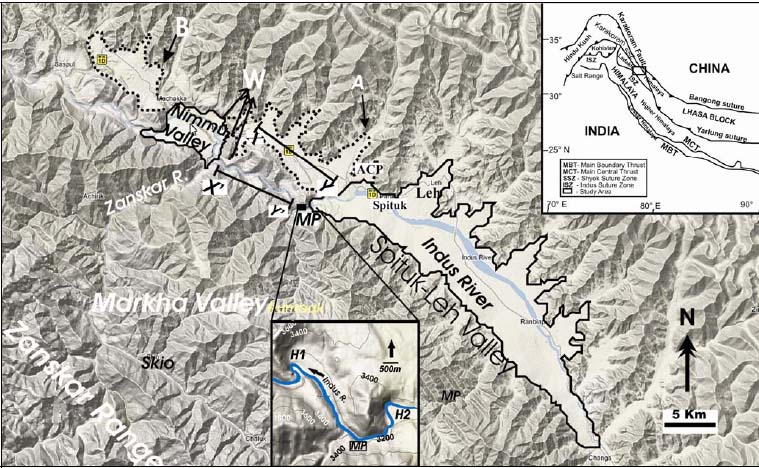Interdependence of glacial fluctuations to hydrometeorology and sediment transfer in the connected river basins is well recognized in the Himalayan region. Considering the increased rates of glacial recession during past few decades, possibility of creating new lake basins by glacial melt and damming of rivers followed by lake outbursts and related flash floods is likely to increase.
Several reports have rated the outburst floods as one of the major hazards in the mountainous regions of the Himalaya. Investigation of past records of damming and outbursts therefore makes one of the significant aspects of studying the potential disasters that can occur by climatic changes in the Himalaya. As a part of the study, the over 55 m thick sediment package is displayed by megascopic (metre scale) and intense injective liquefactions, slumping and gliding of the lake beds, and mega-scouring by gravelly outflow with enclaves of dry lake beds.

Study area marked by modern Spituk–Leh and Nimmu valleys (solid traces)
The combination of liquefaction, scouring and slumping is elaborated here as a consequence of increased hydrostatic compression producing liquefaction followed by instantaneous release of stresses due to breaching resulting into scouring, gravity sliding, collapse and more liquefaction. The episode ended with re-adjustment faults (normal faulting) and gliding of dry lake beds towards the valley floor. The unusually larger magnitudes of liquefaction structures indicates greater time available to develop them relative to that of seismites in this region.
The unique geomorphic setting for the lake site in the river valley further infers the susceptibility of the Indus river to damming and outbursts in the Spituk–Leh valley that is possible during climatic oscillations.
Download the paper here -